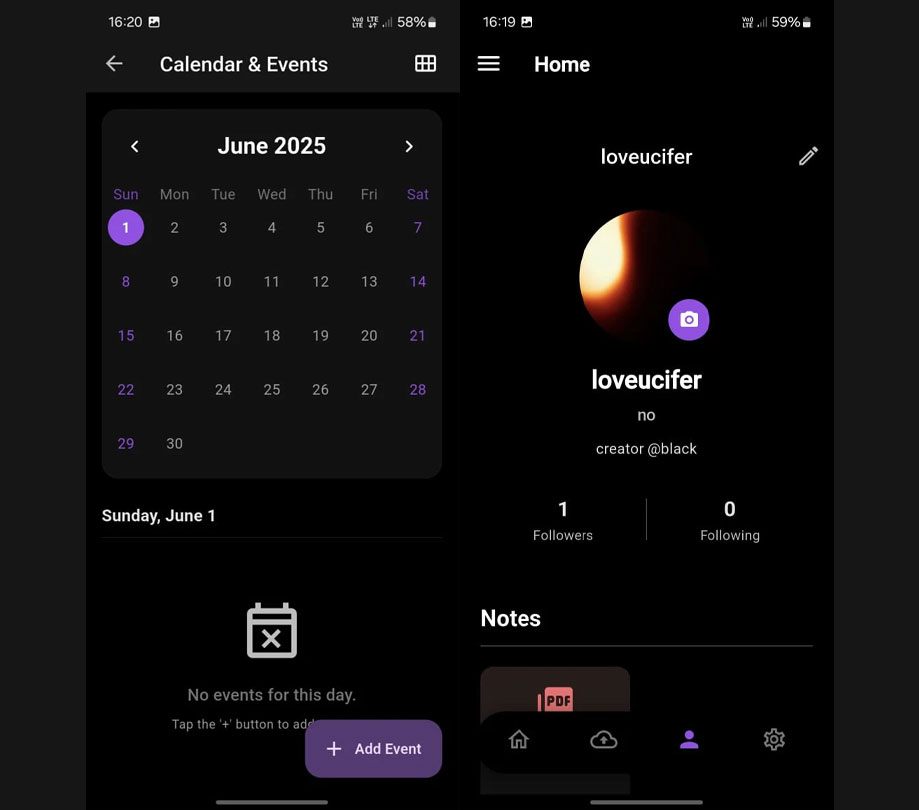Low Code No Code
Low code and no code app development benefits
Wednesday, October 25, 2017

|
Richard Harris |

How low code and no code development platforms are helping enterprise IT teams create mobile apps better.
No-code and low-code platforms serve development projects in a myriad of different ways. It’s all about assessing a business user's ability and the problem at hand to determine the best approach for the job.
That's why we had a chat with John Carione, Product Marketing strategy at Quick Base to learn more about No-code and Low-Code application development.
Carione: While low-code platforms are designed to empower application development professionals in IT to accelerate app delivery for more architecturally complex applications, no-code platforms enable business users without formal coding skills to create, automatically deploy, and update more simple business applications, for themselves and their teams.
Ultimately, low-code platforms typically require some coding and scripting. No-code platforms rely on a visual configuration using drag and drop or point and click functionality to take the place of coding, really opening up the platform to business users with an array of skill sets.
Carione: There are concerns from IT leaders about the idea of business users building apps without enough of their input or knowledge. The great thing is that modern no-code platforms come with enterprise-grade security and governance features, and a lot of vendors have worked to get important security certifications as well. It’s really up to the organization to, in true partnership between IT and the business, put proper governance policies in place, decide how much control their IT personnel have, and how much freedom they want to give their business users.
To ensure proper levels of governance, organizations with sensitive information should maintain some best practices including: regularly keeping IT and application policies updated, classifying and risk-ranking data, enforcing role-based access, and reviewing and implementing security settings for application access.
Carione: No-code problem-solvers can support enterprise IT teams by building underlying workflow frameworks, and applications that map back to key business processes. Enterprise teams are looking to speed up user adoption and time-to-value—they can spend more time working towards these larger strategic goals when they can rely on business users to build more of the basic apps that will house data and streamline workflows.
It comes down to what you’re able to do with your allotted time during the day. When enterprise IT teams with traditional coders have to spend time on apps that don’t fit their skill set, it really is a burden that has greater effects throughout the entire organization. You want these teams focusing on highly transactional Tier 1 ERP applications.
Carione: For one, no-code apps can be built with much more advanced features than some would think given the simplicity of the process. There is an extensive range of features and functionality - from simple tracking and reporting capabilities, to automated workflows complete with notification triggers. Forms, reports, workflows, data structure, and other elements can all be updated in real-time, providing a level of business agility that many don’t realize. One key for organizations is mapping the right builder skill level to the types of applications being built. The more sophisticated and high value the app, the more training a builder needs to deliver the associated positive outcome and solve the challenge.
I think another hidden benefit is how no-code tools can unlock the true potential of a workforce. Because these tools are actually changing the way people work, the impact on one’s daily productivity can be significant. When you empower people to minimize busy work, you’re also empowering them to do more impactful work across the business. Multiply that effect across entire departments, and the results can be incredible.
Carione: No-code tools are ideal for people frustrated with their inability to track and report out critical information which changes daily across teams.
These tools also help business and IT leaders who want to enable their teams to securely access data, collaborate, quickly accomplish tasks and create and disseminate reports with speed and ease.
Carione: We’ve seen companies in a variety of industries use our no-code platform including business services, retail, manufacturing, finance and insurance, healthcare, supply chain management, government and construction among others. These use cases are all unique as well - healthcare companies are leveraging no-code apps to build out clinical trial databases and securely house medical data, retail companies are building apps to manage customer relationships more effectively, and supply chain organizations are developing apps to streamline data workflows as they move materials from location to location.
In every industry companies are looking for ways to increase their business agility, automate manual processes to save time, and free up more skilled, high cost developers to focus on more Tier 1 transactional ERP applications. No-code development has emerged as one of the best solutions to accomplish this.
Carione: From an organizational perspective, no-code development has given business leaders a simpler way to automate various projects, allowing workers to become more strategic, and spend less time on time-consuming manual tasks. Gone are the days of struggling with Microsoft Access updates, emailing spreadsheets around, and losing critical business next steps or changes buried in emails. Because apps can be built and modified so quickly, from nearly anywhere, businesses are becoming more agile and can adapt quickly to changes in their industry.
For workers, it’s about problem-solving and productivity; business users are benefitting from having the right technology in their hands to solve problems with self-made solutions. The extra time workers are recouping through the automation of time-intensive tasks is also empowering them to grow in their careers as they take on more fulfilling, strategic projects instead of “busy work”.
Carione: There will always be a need for professional developers; they are an essential part of IT. The great part about no-code development is it allows business users to handle building day-to-day applications where they are the subject matter expert solving challenges with customer solutions that fit their own unique, ever changing use cases. Professional developers can take on the role of building and managing mission-critical, Tier 1 apps essential to core business operations. You want your skilled coders working on the apps that align with their advanced coding skill set, and where they can deliver the most value to the business.
Professional developers have benefitted from no-code development in the same way business users have - by having more time to work on higher-level projects.
Carione: I’d start by looking at your top priorities: are you looking for speed or stability, and are you ultimately looking to improve business or IT productivity?
If your goal is to adopt a modern development approach that allows you to quickly innovate and meet demand for new business applications, a no-code platform makes more sense for you. This generally applies to organizations with a limited amount of traditional developers and IT resources who really want to empower their business users as much as possible to solve their own problems.
On the other side, if you’re looking to add some written code into your apps, and speed isn’t as important, a low-code platform makes more sense for you. This makes sense at organizations with more developers and technical resources, and that require complete IT control over the development process, frameworks, as well as the look, feel, experience and flow of applications.

Carione: I would say that if your data or process needs are generic and static, or you need a shorter time-to-solution, you may want to buy an application. However, if you have unique or frequently changing data and process needs, or if your process is a source of competitive advantage, building your own application is probably the best choice.
Building your own application allows for the ability to make rapid changes as needed, which is a better approach in situations where customizing applications to fit specific user needs and business processes is required. Additionally, for organizations committed to digital transformation, developing and maintaining a series of applications (whether few, tens or hundreds) on the same platform can be way more cost-effective than purchasing individual packaged applications.
In my role at Quick Base this past year, I had the responsibility, along with our events team, of executing our large 700+ attendee user conference. As you might imagine, there are literally hundreds of people involved in ensuring that an event like this runs on schedule while maintaining high quality standards. Our team of business professionals managed the conference via 12 different Quick Base apps. The team created an app to track user registration statistics, attendee communications, session attendance and room blocks, hotel reservations, and even the newly branded corporate SWAG we gave out to attendees.
John Carione is responsible for setting and driving the Product Marketing strategy at Quick Base. Areas of focus include product launch, PR/AR, messaging, pricing, competitive analysis, and marketing communications. Prior to Quick Base, John worked in a variety of Product Marketing/Management, and Corporate Development roles at Acquia, Adobe, and EMC Corporation. John received a B.S. In Engineering from the University of Notre Dame and an MBA from the Ross School of Business at the University of Michigan.
That's why we had a chat with John Carione, Product Marketing strategy at Quick Base to learn more about No-code and Low-Code application development.
ADM: We've heard and written a lot about low-code. How is no-code different and why is it its own category?
Carione: While low-code platforms are designed to empower application development professionals in IT to accelerate app delivery for more architecturally complex applications, no-code platforms enable business users without formal coding skills to create, automatically deploy, and update more simple business applications, for themselves and their teams.
Ultimately, low-code platforms typically require some coding and scripting. No-code platforms rely on a visual configuration using drag and drop or point and click functionality to take the place of coding, really opening up the platform to business users with an array of skill sets.
ADM: Isn’t this just another name for shadow IT? What’s different?
Carione: There are concerns from IT leaders about the idea of business users building apps without enough of their input or knowledge. The great thing is that modern no-code platforms come with enterprise-grade security and governance features, and a lot of vendors have worked to get important security certifications as well. It’s really up to the organization to, in true partnership between IT and the business, put proper governance policies in place, decide how much control their IT personnel have, and how much freedom they want to give their business users.
To ensure proper levels of governance, organizations with sensitive information should maintain some best practices including: regularly keeping IT and application policies updated, classifying and risk-ranking data, enforcing role-based access, and reviewing and implementing security settings for application access.
ADM: How can no-code problem-solvers support enterprise IT teams as their goals and roles change?
Carione: No-code problem-solvers can support enterprise IT teams by building underlying workflow frameworks, and applications that map back to key business processes. Enterprise teams are looking to speed up user adoption and time-to-value—they can spend more time working towards these larger strategic goals when they can rely on business users to build more of the basic apps that will house data and streamline workflows.
It comes down to what you’re able to do with your allotted time during the day. When enterprise IT teams with traditional coders have to spend time on apps that don’t fit their skill set, it really is a burden that has greater effects throughout the entire organization. You want these teams focusing on highly transactional Tier 1 ERP applications.
ADM: What are some of the hidden benefits of no-code tools?
Carione: For one, no-code apps can be built with much more advanced features than some would think given the simplicity of the process. There is an extensive range of features and functionality - from simple tracking and reporting capabilities, to automated workflows complete with notification triggers. Forms, reports, workflows, data structure, and other elements can all be updated in real-time, providing a level of business agility that many don’t realize. One key for organizations is mapping the right builder skill level to the types of applications being built. The more sophisticated and high value the app, the more training a builder needs to deliver the associated positive outcome and solve the challenge.
I think another hidden benefit is how no-code tools can unlock the true potential of a workforce. Because these tools are actually changing the way people work, the impact on one’s daily productivity can be significant. When you empower people to minimize busy work, you’re also empowering them to do more impactful work across the business. Multiply that effect across entire departments, and the results can be incredible.
ADM: Who uses no-code development tools?
Carione: No-code tools are ideal for people frustrated with their inability to track and report out critical information which changes daily across teams.
These tools also help business and IT leaders who want to enable their teams to securely access data, collaborate, quickly accomplish tasks and create and disseminate reports with speed and ease.
ADM: What kind of industries use these platforms the most?
Carione: We’ve seen companies in a variety of industries use our no-code platform including business services, retail, manufacturing, finance and insurance, healthcare, supply chain management, government and construction among others. These use cases are all unique as well - healthcare companies are leveraging no-code apps to build out clinical trial databases and securely house medical data, retail companies are building apps to manage customer relationships more effectively, and supply chain organizations are developing apps to streamline data workflows as they move materials from location to location.
In every industry companies are looking for ways to increase their business agility, automate manual processes to save time, and free up more skilled, high cost developers to focus on more Tier 1 transactional ERP applications. No-code development has emerged as one of the best solutions to accomplish this.
ADM: How do you think no-code development is changing the business world?
Carione: From an organizational perspective, no-code development has given business leaders a simpler way to automate various projects, allowing workers to become more strategic, and spend less time on time-consuming manual tasks. Gone are the days of struggling with Microsoft Access updates, emailing spreadsheets around, and losing critical business next steps or changes buried in emails. Because apps can be built and modified so quickly, from nearly anywhere, businesses are becoming more agile and can adapt quickly to changes in their industry.
For workers, it’s about problem-solving and productivity; business users are benefitting from having the right technology in their hands to solve problems with self-made solutions. The extra time workers are recouping through the automation of time-intensive tasks is also empowering them to grow in their careers as they take on more fulfilling, strategic projects instead of “busy work”.
ADM: What is the role of professional developers, if no-code platforms are becoming popular?
Carione: There will always be a need for professional developers; they are an essential part of IT. The great part about no-code development is it allows business users to handle building day-to-day applications where they are the subject matter expert solving challenges with customer solutions that fit their own unique, ever changing use cases. Professional developers can take on the role of building and managing mission-critical, Tier 1 apps essential to core business operations. You want your skilled coders working on the apps that align with their advanced coding skill set, and where they can deliver the most value to the business.
Professional developers have benefitted from no-code development in the same way business users have - by having more time to work on higher-level projects.
ADM: What advice do you have for someone wondering if they should purchase a no-code or low-code platform?
Carione: I’d start by looking at your top priorities: are you looking for speed or stability, and are you ultimately looking to improve business or IT productivity?
If your goal is to adopt a modern development approach that allows you to quickly innovate and meet demand for new business applications, a no-code platform makes more sense for you. This generally applies to organizations with a limited amount of traditional developers and IT resources who really want to empower their business users as much as possible to solve their own problems.
On the other side, if you’re looking to add some written code into your apps, and speed isn’t as important, a low-code platform makes more sense for you. This makes sense at organizations with more developers and technical resources, and that require complete IT control over the development process, frameworks, as well as the look, feel, experience and flow of applications.

John Carione, Product Marketing
strategy, Quick Base
strategy, Quick Base
ADM: What advice would you give someone choosing between building their own app vs. buying it?
Carione: I would say that if your data or process needs are generic and static, or you need a shorter time-to-solution, you may want to buy an application. However, if you have unique or frequently changing data and process needs, or if your process is a source of competitive advantage, building your own application is probably the best choice.
Building your own application allows for the ability to make rapid changes as needed, which is a better approach in situations where customizing applications to fit specific user needs and business processes is required. Additionally, for organizations committed to digital transformation, developing and maintaining a series of applications (whether few, tens or hundreds) on the same platform can be way more cost-effective than purchasing individual packaged applications.
ADM: Tell me about a time no-code development has helped you solve a task/manage a project more easily.
In my role at Quick Base this past year, I had the responsibility, along with our events team, of executing our large 700+ attendee user conference. As you might imagine, there are literally hundreds of people involved in ensuring that an event like this runs on schedule while maintaining high quality standards. Our team of business professionals managed the conference via 12 different Quick Base apps. The team created an app to track user registration statistics, attendee communications, session attendance and room blocks, hotel reservations, and even the newly branded corporate SWAG we gave out to attendees.
About John Carione
John Carione is responsible for setting and driving the Product Marketing strategy at Quick Base. Areas of focus include product launch, PR/AR, messaging, pricing, competitive analysis, and marketing communications. Prior to Quick Base, John worked in a variety of Product Marketing/Management, and Corporate Development roles at Acquia, Adobe, and EMC Corporation. John received a B.S. In Engineering from the University of Notre Dame and an MBA from the Ross School of Business at the University of Michigan.

Become a subscriber of App Developer Magazine for just $5.99 a month and take advantage of all these perks.
MEMBERS GET ACCESS TO
- - Exclusive content from leaders in the industry
- - Q&A articles from industry leaders
- - Tips and tricks from the most successful developers weekly
- - Monthly issues, including all 90+ back-issues since 2012
- - Event discounts and early-bird signups
- - Gain insight from top achievers in the app store
- - Learn what tools to use, what SDK's to use, and more
Subscribe here












Comments